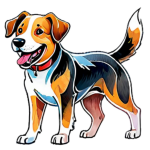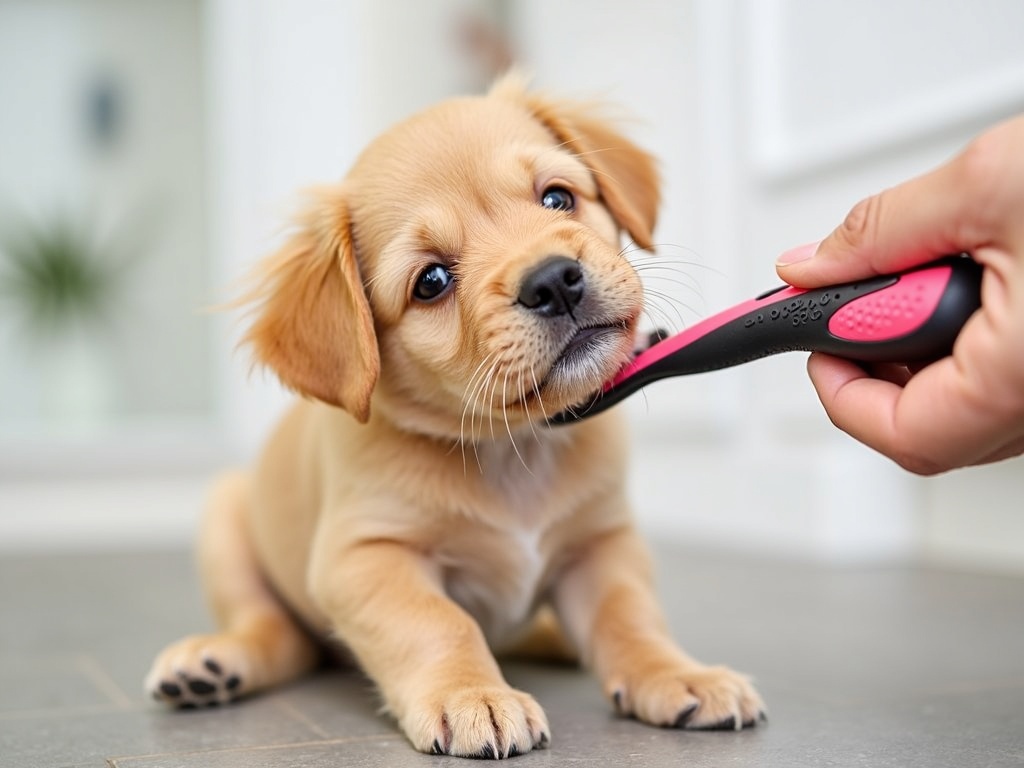Here's your SEO-optimized article on daily puppy grooming tasks:
The Ultimate Guide to Daily Puppy Grooming Tasks
Bringing a puppy into your life is an explosion of joy, fluffy cuddles, and playful nips. But beneath all that adorableness lies a responsibility – a crucial one being grooming. Establishing a daily grooming routine isn't just about keeping your pup looking Instagram-ready; it's about building a bond, monitoring health, and preventing future problems. So, what exactly does a daily puppy grooming routine entail? Let's dive in and uncover the secrets to keeping your furry friend happy, healthy, and impeccably groomed.
Why Daily Grooming Matters for Puppies
You might be thinking, Daily? Isn't that a bit much? Well, consider this: puppies are constantly exploring, getting into mischief, and discovering the world through their mouths (and paws!). This means they're also magnets for dirt, debris, and potential skin irritants. More importantly, early handling accustoms them to being touched and manipulated, making vet visits and professional grooming sessions much less stressful down the road. Here’s why a consistent daily approach is so important:
- Early Habit Formation: Puppies learn quickly. By making grooming a daily habit, you're setting the stage for a lifetime of cooperative behavior.
- Bonding Time: Grooming is a wonderful opportunity to strengthen the bond between you and your puppy. Gentle touches and soothing words create positive associations.
- Health Monitoring: Daily grooming allows you to regularly check for any abnormalities, such as fleas, ticks, skin irritations, lumps, or bumps. Early detection is key to effective treatment.
- Coat Maintenance: Regular brushing removes dead hair and prevents matting, especially important for long-haired breeds. It also stimulates blood circulation, promoting a healthy, shiny coat.
- Preventing Problems: Addressing minor issues like dirt buildup or small tangles daily prevents them from escalating into larger, more difficult problems.
Essential Daily Puppy Grooming Tasks: A Step-by-Step Guide
Now that you understand the importance of daily grooming, let's break down the specific tasks you should incorporate into your routine. Remember to keep these sessions short, positive, and filled with praise and treats!
1. The Daily Brush
Brushing is the cornerstone of any daily grooming routine. The type of brush you use will depend on your puppy's breed and coat type:
- Slicker Brush: Ideal for removing mats and tangles, especially in medium to long-haired breeds.
- Bristle Brush: Great for smoothing the coat and removing loose hair. Suitable for most breeds.
- Rubber Brush: Excellent for short-haired breeds with sensitive skin. Also helps to distribute natural oils.
- Grooming Mitt: A gentle option for puppies who are sensitive to brushes.
How to Brush:
- Start with gentle, short strokes, focusing on one area at a time.
- Pay attention to areas that are prone to matting, such as behind the ears, under the legs, and around the tail.
- If you encounter a tangle, gently work it out with your fingers or a detangling spray before brushing.
- End with a light once-over to smooth the coat.
2. Paw Patrol: Cleaning and Inspection
Your puppy's paws are their primary mode of transportation and exploration. Daily paw care is essential for preventing infections and injuries.
How to Clean and Inspect:
- Wipe your puppy's paws with a damp cloth or paw wipes after each walk or outdoor adventure.
- Check between the toes for any debris, such as thorns, burrs, or small stones.
- Inspect the paw pads for any cuts, cracks, or blisters.
- Trim any excess hair between the toes to prevent matting and trapping of debris. (Consult a groomer or vet if you're unsure how to do this safely.)
3. Face Time: Eye and Ear Cleaning
The face requires special attention due to the potential for tear stains and ear infections. Make sure to be very gentle and use appropriate products.
How to Clean Eyes and Ears:
- Eyes: Gently wipe away any discharge around the eyes with a soft, damp cloth or cotton ball. Use a separate cloth for each eye to prevent the spread of infection. For tear stains, you can use a specialized tear stain remover.
- Ears: Check your puppy's ears for any signs of redness, inflammation, or discharge. Use a veterinarian-approved ear cleaning solution and cotton balls to gently clean the outer ear canal. Never insert cotton swabs deep into the ear canal, as this can damage the eardrum.
4. Mouth Matters: Dental Hygiene
Starting a dental hygiene routine early is crucial for preventing dental disease, which can lead to serious health problems. Daily brushing is ideal, but even a few times a week can make a big difference.
How to Brush Your Puppy's Teeth:
- Use a toothbrush and toothpaste specifically designed for dogs. Never use human toothpaste, as it contains ingredients that are harmful to dogs.
- Start slowly, allowing your puppy to lick the toothpaste from your finger.
- Gradually introduce the toothbrush, gently brushing the teeth in a circular motion.
- Focus on the outer surfaces of the teeth, as this is where plaque and tartar tend to accumulate.
- Reward your puppy with praise and a treat after each brushing session.
Tips for a Successful Daily Grooming Routine
Here are some additional tips to make your daily puppy grooming routine a pleasant experience for both you and your furry friend:
- Start Early: Introduce grooming as soon as you bring your puppy home.
- Keep it Short and Sweet: Start with short sessions (5-10 minutes) and gradually increase the duration as your puppy becomes more comfortable.
- Positive Reinforcement: Use plenty of praise, treats, and positive reinforcement to create positive associations with grooming.
- Be Gentle: Always be gentle and patient, especially when dealing with sensitive areas like the face and paws.
- Choose the Right Tools: Use grooming tools that are appropriate for your puppy's breed and coat type.
- Find a Consistent Time: Establish a consistent time for grooming each day so that it becomes a routine.
- Make it Fun: Turn grooming into a game by incorporating toys and playful interactions.
- Be Observant: Pay attention to your puppy's body language and adjust your approach accordingly. If your puppy seems stressed or uncomfortable, stop and try again later.
When to Seek Professional Help
While daily grooming is essential, there are times when you should seek professional help from a groomer or veterinarian:
- Excessive Matting: If your puppy has severe matting that you can't remove with brushing, a professional groomer can safely clip the mats without hurting your pup.
- Skin Problems: If you notice any signs of skin irritation, infection, or allergies, consult your veterinarian.
- Nail Trimming: If you're uncomfortable trimming your puppy's nails, a groomer or veterinarian can do it for you.
- Ear Infections: If you suspect your puppy has an ear infection, consult your veterinarian for diagnosis and treatment.
Conclusion: A Lifetime of Happy Grooming
Establishing a daily puppy grooming routine is an investment in your furry friend's health, well-being, and happiness. By making grooming a positive and consistent experience, you'll not only keep your puppy looking their best but also strengthen your bond and prevent potential health problems. So, grab your brush, gather your treats, and get ready to embark on a lifetime of happy grooming with your adorable puppy!


